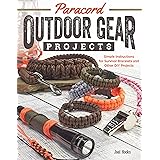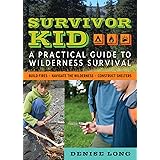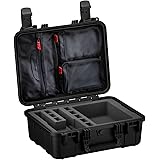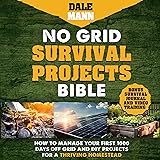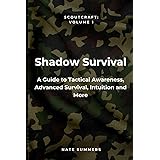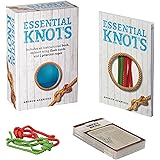Essential Survival Medicine Kits: Equipping for Emergency Preparedness
In a world facing increasing uncertainties, the prospect of navigating a medical emergency without access to conventional care presents a significant challenge for many. As highlighted in the accompanying video from Engineer 775, being prepared with the right tools and knowledge for survival medicine can make a profound difference. This article will expand on the critical insights shared, emphasizing the necessity of robust emergency medical kits and trained personnel to manage unforeseen health crises effectively.
The core issue revolves around the vulnerability individuals and groups face when standard medical infrastructure becomes unavailable, whether due to natural disasters, civil unrest, or remote living situations. The solution lies in proactive preparedness: assembling specialized kits and ensuring that trained individuals are part of your readiness plan. This strategic approach mitigates risks and enhances your capacity to respond to various medical incidents, from minor injuries to significant trauma.
1. Building Comprehensive Trauma Kits for Critical Situations
When discussing emergency preparedness, a robust trauma kit is often the first line of defense against severe injuries. The video specifically showcases a gunshot wound kit, which contains vital components for managing life-threatening bleeding and penetrating trauma. This specialized equipment is distinct from typical first-aid supplies found in retail stores.
For instance, products like Sea-Lox, an injectable hemostatic agent, are designed to stop profuse bleeding at its source, even within small, deep wounds. Medical professionals endorse such targeted solutions over less effective alternatives, emphasizing precision and efficacy. Furthermore, having high-quality Soft T tourniquets is crucial, as they are proven tools for controlling arterial bleeding in limbs, significantly improving survival rates in traumatic injury scenarios.
Chest seals are another critical component for managing penetrating chest wounds, preventing collapsed lungs by sealing both entry and exit points. A comprehensive kit should also include basic wound care instruments for initial assessment and cleaning, alongside combat casualty cards. These cards enable responders to record injury details and treatment provided, ensuring continuity of care if a trained medical professional eventually takes over.
2. Dental Preparedness: Addressing Oral Emergencies in a Crisis
Dental emergencies, while often not immediately life-threatening, can cause immense pain and lead to severe complications if left untreated. The video introduces a deluxe dental kit, which is far more extensive than basic oral hygiene supplies. This kit empowers individuals to address common dental issues when professional dental services are inaccessible.
Items within such a kit typically allow for tasks like replacing lost fillings, repairing loose bridges, or even fastening detached crowns. More advanced capabilities might include draining abscesses, which can prevent widespread infection, and in dire circumstances, performing tooth extractions. The accompanying resource, “Where There Is No Dentist,” is frequently cited as an indispensable guide for diagnosis and treatment, providing step-by-step instructions for various oral health problems.
The specialized tools in these kits, such as heavy-duty elevators and extractors, are not consumer-grade items available at local pharmacies. They are medical-grade instruments designed for durability and effectiveness in challenging conditions. Investing approximately $200 in a quality dental kit can save individuals from considerable suffering, underscoring the value of specialized preparedness for dental emergencies.
3. The Family Stomp Bag: An All-Encompassing Trauma Solution
For groups or families committed to extensive preparedness, a large-scale trauma bag, often referred to as a “stomp bag,” consolidates a vast array of medical supplies. This kit acts as a central hub for medical response, containing many items found in smaller, specialized kits along with additional resources. It is designed to sustain comprehensive medical care for multiple individuals over an extended period.
Such a bag typically includes an abundant supply of hemorrhagic bandages and hemostatic agents, crucial for managing severe bleeding. Beyond wound care, a stomp bag often features splints and wraps for stabilizing fractures, along with suture kits and even stapling kits for closing wounds. These specialized instruments are essential for effective emergency medical treatment and are rarely found outside professional medical settings.
Ample quantities of gauze are a necessity, as managing bleeding and dressing wounds consumes significant amounts. Additionally, these kits incorporate diagnostic tools such as stethoscopes for listening to heart and lung sounds, blood pressure cuffs for monitoring vital signs, and pupil gauges to assess neurological status. Including eye wash stations addresses ocular injuries, making the stomp bag a truly comprehensive solution for a wide range of medical scenarios that may arise during civil unrest or prolonged isolation.
4. The Indispensable Role of Trained Personnel and Legal Considerations
While possessing high-quality medical kits is fundamental, their effectiveness is greatly amplified when combined with the expertise of trained personnel. As mentioned in the video, having individuals such as licensed pharmacists, nurses, EMTs, or combat medics within your group is invaluable. These professionals bring critical diagnostic skills and practical experience, enabling accurate assessment and swift, appropriate treatment.
It is important to remember that in normal circumstances, practicing medicine or dentistry without proper licensing is illegal and can carry severe penalties. The specialized items within these kits, if misused, have the potential to cause significant injury. Therefore, the primary goal of equipping with these tools should be to empower those with existing medical knowledge or to provide resources for when professional care is utterly unavailable.
Individuals should actively seek training in basic first aid and emergency response, but for advanced procedures, deferring to or recruiting those with professional training is paramount. Furthermore, the discussion of antibiotics is crucial in emergency medicine, yet their acquisition and use must always be legal and responsible, typically requiring a prescription from a qualified healthcare provider. Building a knowledgeable and skilled team is just as important as gathering equipment, ensuring effective and safe medical preparedness.


